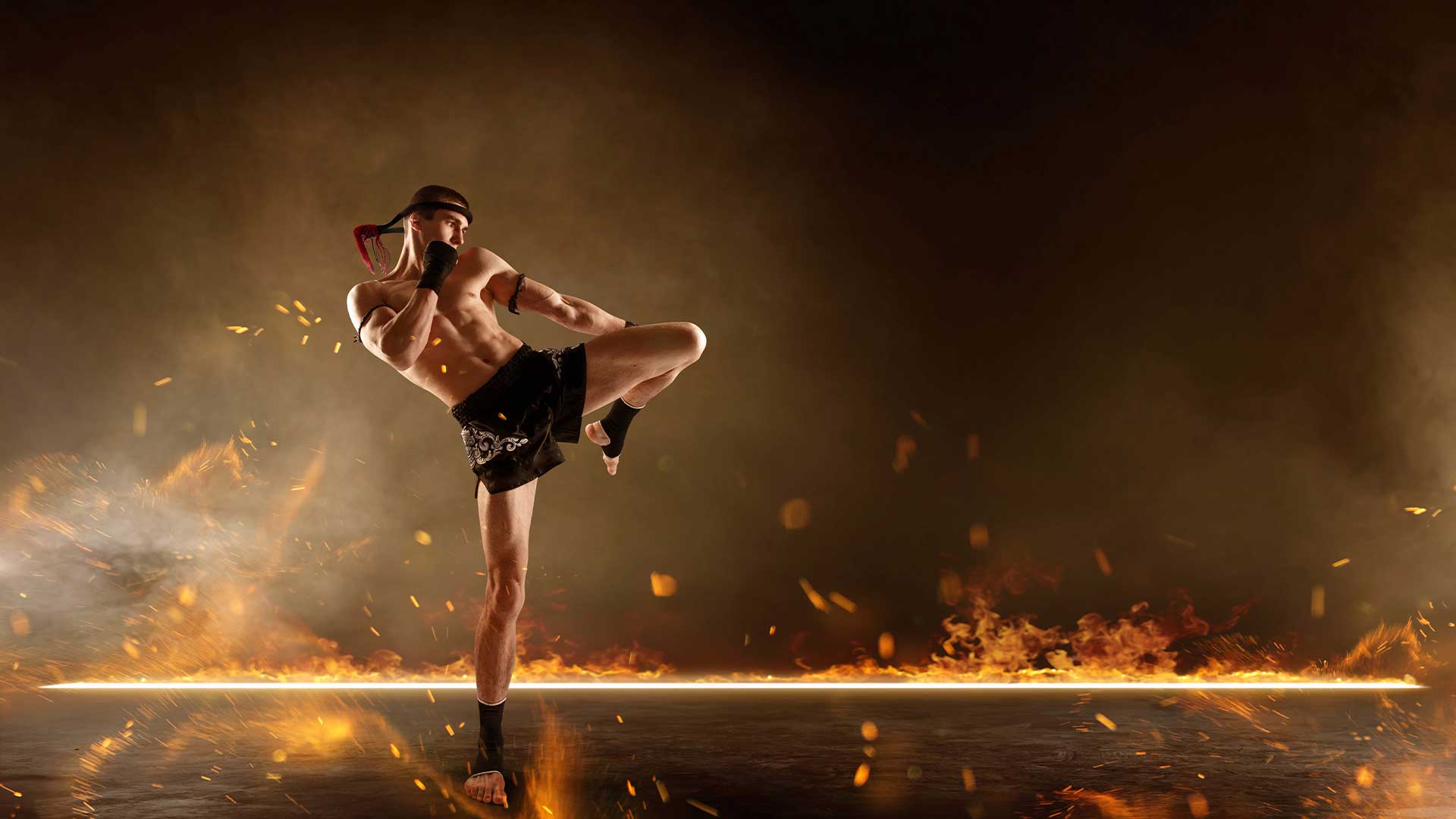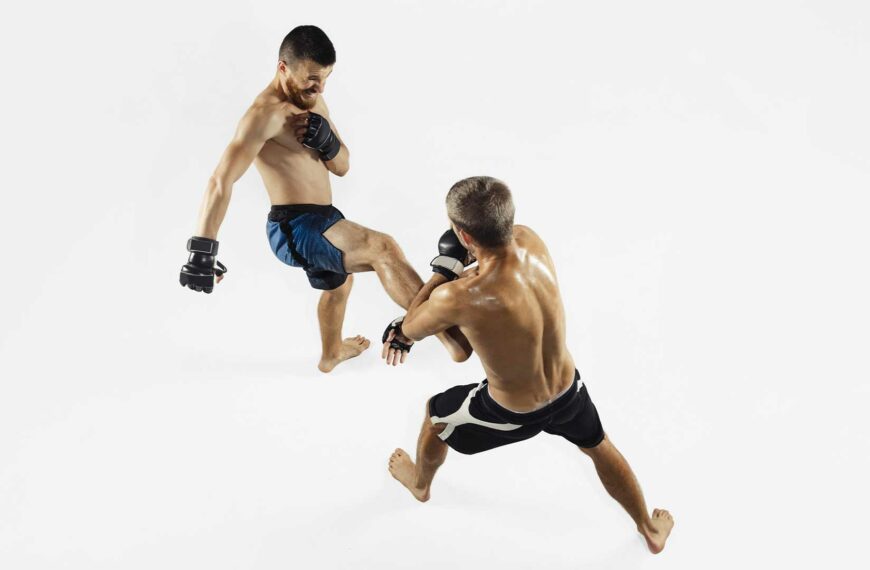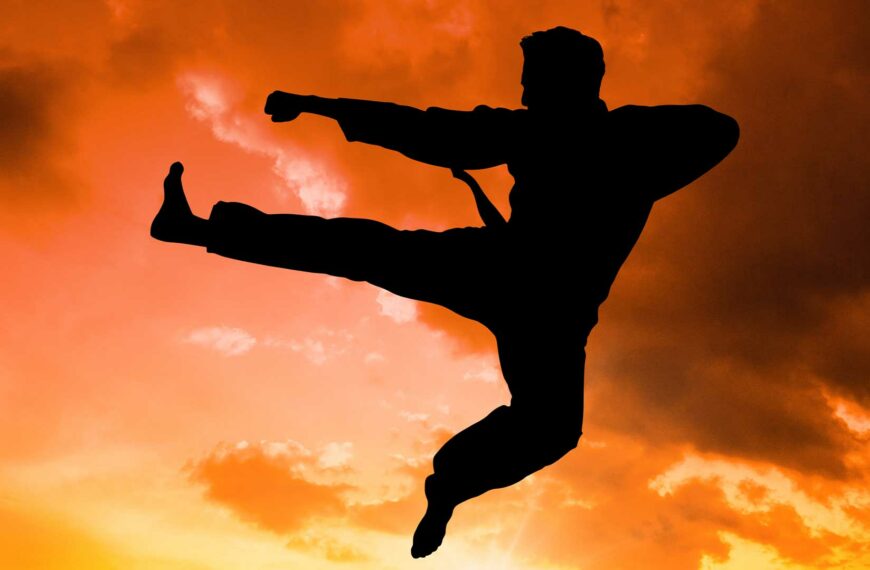Forget the idea that you need a partner to keep your Muay Thai skills sharp. While having a sparring partner is invaluable, there’s a treasure trove of solo training exercises that can keep you fight-ready and in peak condition to do Muay Thai at home. Whether you’re a seasoned fighter or a newcomer eager to dive into the world of this revered martial art, these 10 training methods will ensure your journey doesn’t hit a snag, even when a partner isn’t available.
Muay Thai, often referred to as “The Art of Eight Limbs”, is not just a sport; it’s a discipline that shapes your body, mind, and soul. Training solo for Muay Thai might sound like a daunting task at first. However, with a blend of creativity, dedication, and the right techniques, you can turn your living space into your personal dojo. Let’s explore how.

Solo Training – Muay Thai at Home
- Shadowboxing: Practice techniques and footwork without a partner.
- Jump Rope: Improve footwork, endurance, and agility.
- Heavy Bag: Develop power and technique for strikes.
1. Shadowboxing
Shadowboxing isn’t just throwing punches and kicks into the air; it’s about visualizing an opponent and engaging in a battle of wits and strength. It’s here, in the silent dance of shadowboxing, that you refine your techniques, work on your footwork, and enhance your ability to anticipate and react. Set a timer for three-minute rounds with a one-minute rest in between, mimicking the structure of a real fight, and focus on form, movement, and technique. It’s not about speed or power but precision and fluidity.
Insider Tip: Imagine a mirror opponent that mimics your every move. This will encourage you to maintain your guard and work on your defensive maneuvers.
2. Jump Rope
The rhythmic bounce of the jump rope is music to a Muay Thai fighter’s ears. It’s about more than just endurance; it’s a coordination dance, a way to build agility, and a method to enhance your footwork. Integrating different jump rope techniques, from basic jumps to double unders, keeps the routine engaging and challenging. Remember, it’s not just a warm-up; it’s a crucial part of your training regimen.
3. Heavy Bag
The heavy bag is your silent, steadfast opponent, always ready for a round. It’s where you bring power to your punches, kicks, elbows, and knees. The beauty of the heavy bag is in the feedback it provides; every hit tells you about your form, your power, and your areas for improvement. Work on combinations, practice your strikes, and don’t forget to move around the bag as if it were a real opponent.
4. Kicking Pads
While traditionally used with a partner, kicking pads can be adapted for solo training by attaching them to a wall or a heavy bag. This setup allows you to work on your kicks, focusing on technique, power, and accuracy. The resistance provided by the pads simulates the impact on an opponent, offering valuable feedback for refining your skills.
5. Pull-Up Bar
Strength is a vital component of Muay Thai, and the pull-up bar is a testament to that. Integrating pull-ups into your training routine builds upper body strength, enhances grip, and improves overall conditioning. It’s not just about pulling yourself up; it’s about engaging your core, maintaining proper form, and pushing your limits.
6. Push-Ups
Push-ups are more than a basic exercise; they’re a foundation for building the strength necessary for Muay Thai. By varying the types of push-ups, from traditional to knuckle to spiderman push-ups, you engage different muscle groups, improve your core stability, and enhance your endurance. It’s a simple exercise that, when executed with precision and variation, becomes an essential tool in your training arsenal.
7. Sit-Ups
Core strength is crucial in Muay Thai, as it’s the anchor for your strikes and the shield for your defense. Sit-ups, along with variations like Russian twists and planks, fortify your core, making your movements more explosive and your stance more resilient. A strong core also aids in injury prevention, ensuring that your training can continue without unwanted interruptions.
8. Squats
Squats are the cornerstone of power for a Muay Thai fighter. They build leg strength, enhance mobility, and improve endurance. Incorporating different variations, such as jump squats or one-legged squats, challenges your body in new ways, ensuring that your legs are ready to deliver devastating kicks and maintain a solid stance throughout a fight.
9. Running
Endurance in Muay Thai is non-negotiable. Running, from sprints to long-distance jogs, builds the cardiovascular endurance needed to last through the most grueling fights. It’s also a mental game, teaching you how to push through discomfort and fatigue, skills that are invaluable in the ring.
9. Stretching
Flexibility and mobility are your best friends in Muay Thai. A comprehensive stretching routine not only prevents injuries but also ensures that your kicks reach higher, your stance is wider, and your movements are fluid. Incorporating dynamic stretches before your workout and static stretches afterward maximizes your performance and recovery.
Insider Tip: Yoga poses, especially those focusing on hip and shoulder flexibility, can be incredibly beneficial for Muay Thai practitioners.
Conclusion
Training solo for Muay Thai is not just about staying in shape; it’s about refining your skills, understanding your body, and preparing your mind for the challenges ahead. These 10 exercises offer a comprehensive approach to solo training, ensuring that every aspect of your game improves, even in the absence of a partner. Remember, the key to success in Muay Thai, as in life, is consistency, dedication, and the willingness to push beyond your limits. So, lace up your gloves, set your sights on your goals, and let the journey begin.
FAQ
Who can benefit from training solo for Muay Thai?
Anyone looking to improve techniques and fitness levels.
What equipment is essential for solo Muay Thai training?
Basic gear like gloves, pads, a heavy bag, and jump rope.
How can one stay motivated when training alone?
Setting specific goals and tracking progress regularly.
What if I can’t afford a gym membership for Muay Thai?
Utilize online resources and tutorials for guidance.
How often should I train solo for Muay Thai?
Aim for 3-5 sessions per week to see progress.
What if I feel discouraged training alone?
Join online communities for support and motivation.












![[aggregator] downloaded image for imported item #10341](https://muaythai.today/wp-content/uploads/2026/01/ELCES7YWD44yyIP_8E7n_ep0l6D7phBtIUfAF4vr-0.jpg)
![[aggregator] downloaded image for imported item #10346](https://muaythai.today/wp-content/uploads/2026/01/oqEo-Khm_h8kuBKuETpCBuKORqp3ezTuUL4AJN7naUY.jpg)